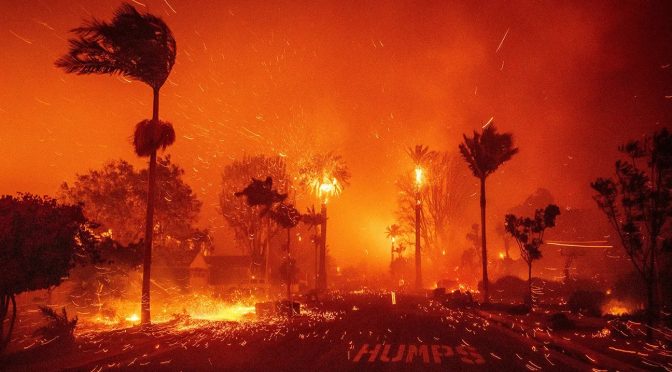Wildfires are a striking and often devastating natural phenomenon. When they occur, it may seem like buildings are far more prone to burning than the natural vegetation around them. However, the reasons for this apparent discrepancy lie in the differences between the materials involved and the conditions required to sustain a fire.
Why Buildings Burn Differently from Vegetation
1. Material Composition
- Buildings: Structures often contain a mix of wood, plastics, synthetic fibers, and chemicals. Many of these materials are highly flammable or produce intense heat when they burn. For instance, wooden beams and furniture are excellent fuel sources, and synthetic materials can ignite easily, creating hotter and faster-spreading fires.
- Vegetation: Natural materials like grass, leaves, and trees vary in flammability depending on their moisture content. Dry vegetation burns quickly, while green, moist vegetation resists ignition because the water must evaporate before combustion can occur.
2. Moisture Content
- Dry conditions, such as during droughts or heatwaves, increase the flammability of natural vegetation. Conversely, wet vegetation acts as a natural fire retardant, delaying or preventing ignition.
- Buildings typically do not have moisture that can slow down a fire, unless they have been treated with fire-retardant materials or are equipped with fire suppression systems.
3. Fire Behavior
- Buildings: Fires in buildings tend to be enclosed, trapping heat and allowing flames to grow rapidly. The combination of synthetic materials and trapped heat can lead to intense flames and toxic smoke, making the fire spread quickly within and between structures.
- Vegetation Fires: In the open environment of a wildfire, fire spreads differently. Grass fires, for example, move rapidly but burn out quickly, while trees can take longer to ignite but may sustain longer-burning, more intense fires (especially during crown fires).
4. Fuel Availability
- Natural fuels like grass and leaves are widespread but burn quickly once ignited. Trees, though slower to catch fire, provide longer-lasting fuel.
- Buildings act as concentrated sources of fuel. Once a building ignites, the dense array of combustible materials inside can sustain a more intense and prolonged fire.
5. Human Factors
Buildings are often located near vegetation and may ignite due to proximity to flames, heat radiation, or embers carried by the wind. Once burning, buildings release significant heat, which can contribute to secondary ignitions of nearby structures or vegetation.
The Requirements for Fire
Fire cannot occur without the right combination of three essential elements, often called the fire triangle:
- Heat: A source of ignition is needed to raise materials to their ignition temperature.
- Fuel: Combustible materials such as wood, grass, leaves, or synthetic substances.
- Oxygen: Fire requires oxygen from the surrounding air to sustain combustion.
Without any one of these elements, a fire cannot start or continue to burn. For example:
- Removing heat (cooling) can extinguish a fire.
- Removing fuel (starvation) prevents it from spreading.
- Removing oxygen (smothering) cuts off combustion.
How to Protect Structures in Wildfires
To reduce the risk of buildings igniting during a wildfire, consider these strategies:
- Use fire-resistant building materials.
- Create a defensible space by clearing vegetation and debris around structures.
- Install ember-resistant vents and maintain a clean roof and gutters.
- Use landscaping that includes fire-resistant plants.
Understanding the dynamics of fire and how different materials burn can help us better prepare for and mitigate the impacts of wildfires.
